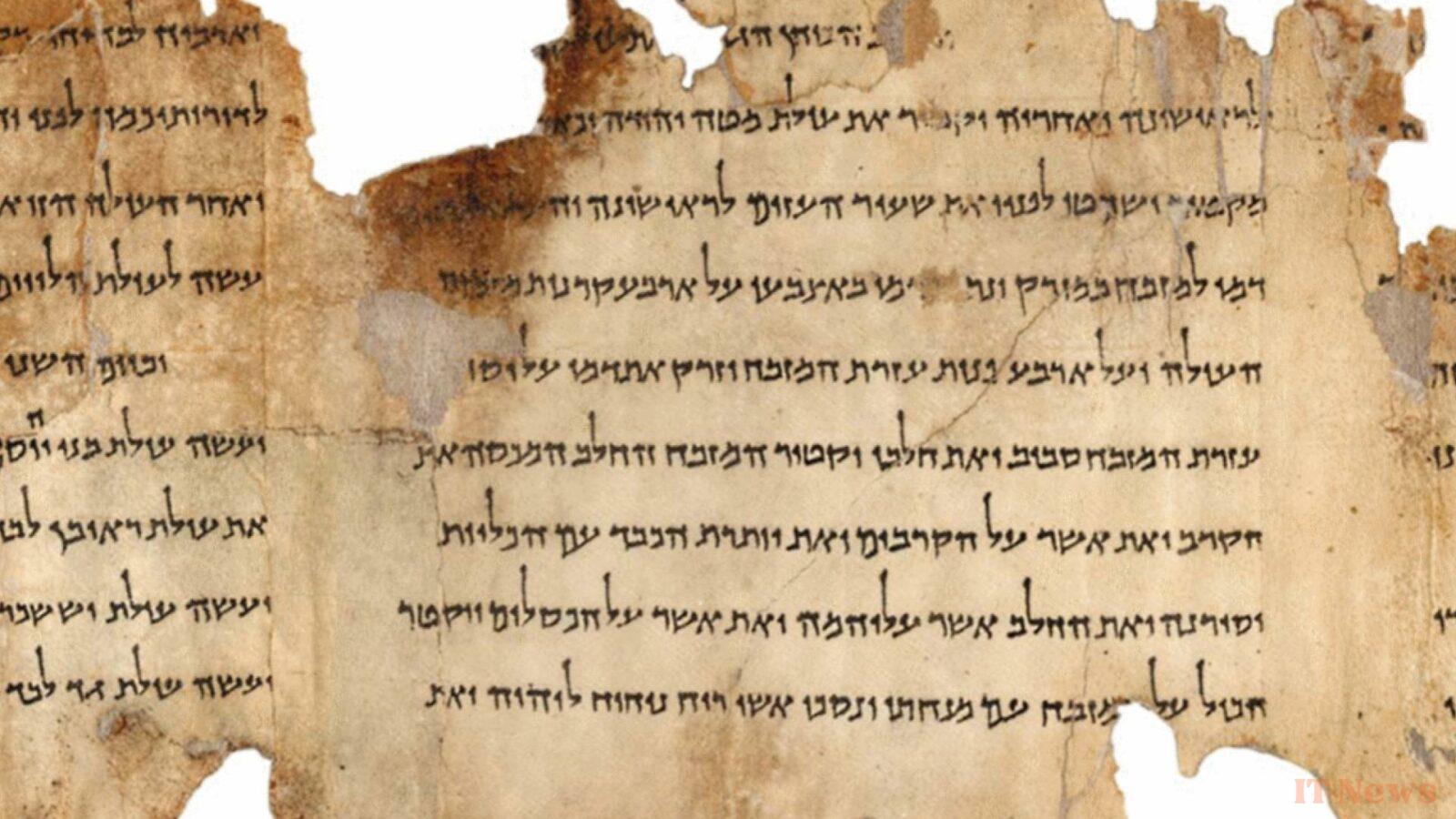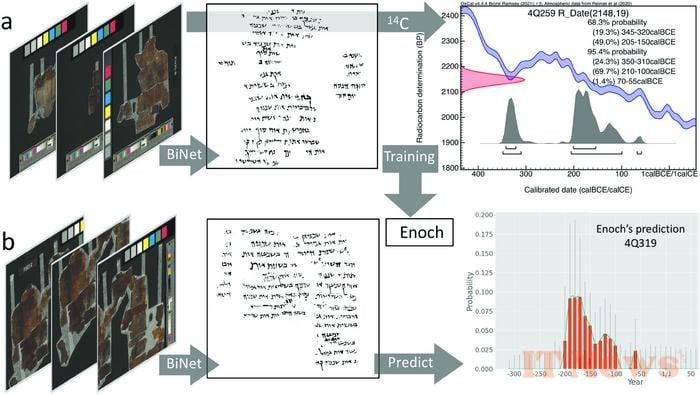Researchers have analyzed the Dead Sea Scrolls using an artificial intelligence-based system to date them with unprecedented precision. It turns out that these artifacts of immense historical importance could be older than previously thought—a discovery that, if confirmed, could have a significant impact on our understanding of the history of Judaism and Christianity.
This story began in 1947, in a cave on the northwest shore of the Dead Sea. There, a Bedouin shepherd stumbled upon some astonishing artifacts: inside some old clay pots, he discovered a set of seven apparently very ancient scrolls, in a rather remarkable state of preservation. After remaining in the shepherd's possession for some time, some were eventually sold to antique dealers in Bethlehem, who in turn passed them on to scholars. The latter quickly realized that they had stumbled upon very ancient and valuable objects. They therefore launched a major archaeological dig that uncovered hundreds more fragments.
These documents, now called Dead Sea Scrolls, are considered some of the most important artifacts in the world. They are the oldest known copies of some historically important works, such as the Hebrew Bible. They therefore offer a unique perspective on the religious practices of the time, and many contextual elements on the origins of Christianity and ancient Judaism.
A problem of date
But some doubts persist regarding the date of production of some of these manuscripts. Indeed, while some of them have been explicitly dated by their authors, others are completely devoid of this kind of information. A regrettable omission, as it limits the ability of specialists to interpret them and extract valuable contextual elements from them.
Certainly, there are techniques that allow this information to be determined even if it does not appear on the document, starting with carbon-14 dating. This is a particularly important technique in the history of science, and particularly in archaeology, paleontology, climatology, and art history, because it allows the age of very old objects to be determined with good precision. But even though it has paved the way for phenomenal progress in all these disciplines, it is not infallible – and this is particularly glaring in this case.
To begin with, carbon-14 dating has a margin of error that can range from a few decades to around a century. This uncertainty is perfectly acceptable in some cases, but problematic when it comes to tracing precise sequences of events, as is the case here. In addition, it is a destructive method: it requires sacrificing a small part of the object being dated. Again, this is a big problem in the case of the Dead Sea Scrolls, because with each dating, we run the risk of compromising the integrity of a precious document.
But the biggest problem is that the information we can get from it is not necessarily relevant. Indeed, carbon-14 dating can determine the age of the support... but not necessarily the text inscribed on it! A parchment may have been made long before the text was inscribed on it, and this opens the door to regrettable misinterpretations.
Machine learning to the rescue
This is where a group of researchers from the University of Groningen, in the Netherlands, comes in. Recently, they developed a new hybrid method, combining traditional dating techniques with machine learning, to trace the origin of these manuscripts.
They began by gathering numerous period documents from various sites in modern-day Israel and Palestine. All of these documents were first carbon-dated, which provided reference dates. But to go further, they focused on the text itself.
It is known that writing styles tend to vary relatively consistently over time in a given region. In theory, therefore, complex patterns can be extracted from a set of handwritten texts to assign them an age; this is called paleography.
The problem is that all these details are often too subtle for rigorous human analysis. But this is precisely the kind of task that is ideally suited to machine learning algorithms, which are unrivaled in uncovering these kinds of virtually imperceptible patterns. By combining these two complementary approaches: radiocarbon dating and paleographic analysis, the authors of the study were able to design a system called Enoch, capable of determining the age of a document with unprecedented precision.
Certainly, since both methods involve a significant amount of uncertainty, the results were not perfect. For about 20% of the 135 manuscripts tested, Enoch's proposed age was deemed too inconsistent to be used. But the researchers believe that the remaining 80% were entirely realistic, and accurate enough to support further analysis.
Fascinating new context
This approach has already led to some intriguing results: two biblical fragments have been dated by Enoch to periods that coincide with those traditionally associated with their presumed authors—a first in Dead Sea Scrolls research.
This is potentially crucial information, as it suggests that these texts may have been written much earlier than previously thought. They may have been recorded very close to the time of their original authors, rather than being reproduced by several generations of scribes, with all that this implies for the integrity of the original content.
By extension, this calls into question the widely accepted idea that the events described in these religious texts were recorded long after they took place. It is possible that they were in fact recounted almost “live” – an exciting hypothesis that could greatly improve our understanding of the historical context.
It is important to point out, however, that the method devised by the researchers remains primarily probabilistic; by definition, it cannot therefore produce rigorous proof. But it still offers some very serious and quite fascinating avenues that, in the long term, could lead to major discoveries.
"Thanks to Enoch, we have opened a new door onto the ancient world, like a time machine. It allows us to study the hands that wrote the Bible, especially since we have established, for the first time, that two fragments of biblical scrolls date from the time of their presumed authors," the authors rejoice. "It is very exciting to take an important step in solving the dating problem of the Dead Sea Scrolls and to create a new tool that could be used to study other collections of partially dated manuscripts in history."
The text of the study is available here.




0 Comments